As the majority of cinemas remain closed nationwide, independent exhibitors have begun tackling the challenge of keeping in touch with audiences in different ways. From virtual fundraisers to curbside concessions sales, their ingenuity has helped them stay close to audiences while their doors are closed. As the industry slowly begins to enter a recovery phase, with reports of the first cinemas in the country beginning to open up, a new challenge has emerged: how do you communicate effectively with audiences when it’s time to return to the movies?
A Boxoffice Pro LIVE Session webinar moderated by Rebecca Pahle, deputy editor of Boxoffice Pro, and sponsored by the publication’s corporate parent, The Boxoffice Company, tackled this challenge facing exhibitors.
First and foremost, auditing one’s social media presence is important in order to define your audience and discover their interests. This type of social listening enables cinema operators to assess what’s being said about their venue: What makes it unique? What’s falling short of expectations? Without understanding your community, defining or building a brand is practically impossible.
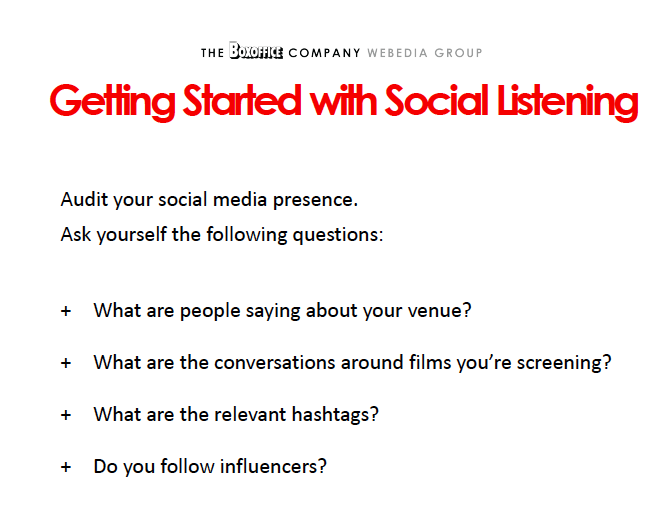
The panel discussion focused on four of today’s most relevant social platforms—Facebook, Instagram, Twitter, and TikTok—each of them requiring a unique content strategy to reach different segments of the audience.
Facebook, which originally launched as a platform exclusively for college students, now counts on users over the age of 30 as their most engaged segment, according to a presentation delivered by Marine Suttle, chief product officer at The Boxoffice Company.
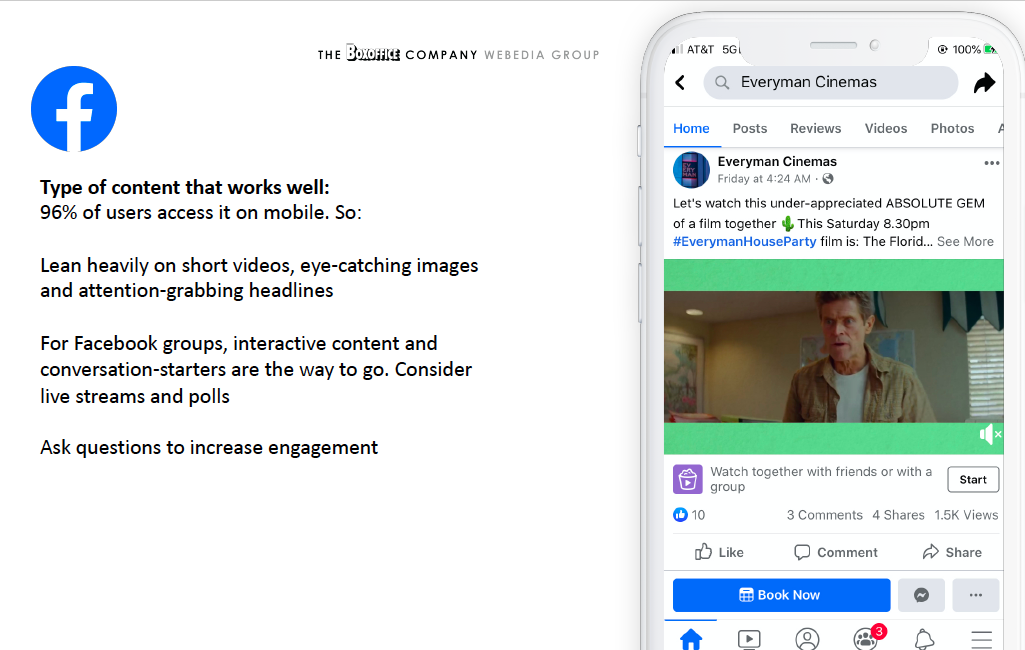
Facebook’s standalone photo-sharing app, Instagram, has become the most popular social platform for young adults ages 18-29. The image-driven app is popular with influencers and a great destination for aspirational content and promoting entertainment destinations like cinemas.
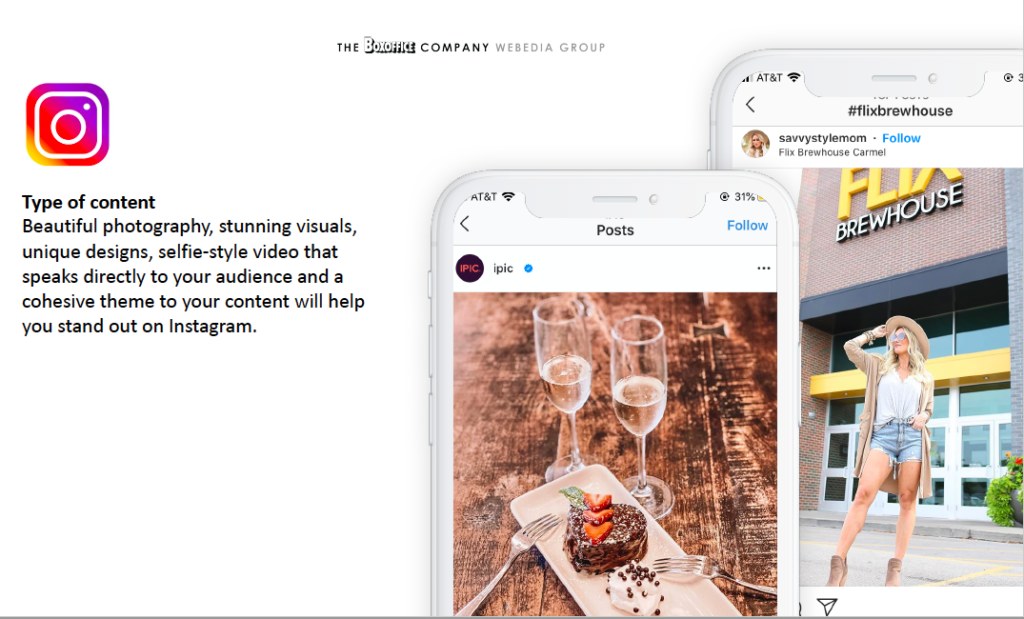
On the other end of the spectrum, Twitter, is a lot more text-based, making it ideal to communicate with audiences or get specific messages across.
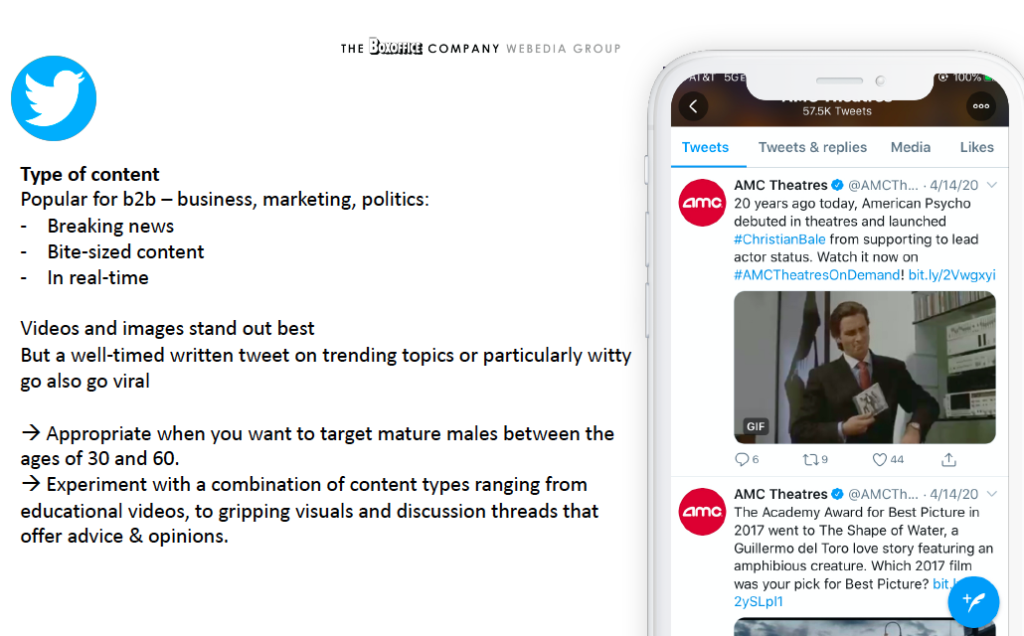
Finally, younger audiences have ditched Snapchat and are now flocking over to TikTok, a short-form video app popular with teens and young adults ages 13 to 24. TikTok can be a good way to engage with movie fans using promotional studio content or leverage the creativity of a theater’s staff to give marketing efforts a personal touch.
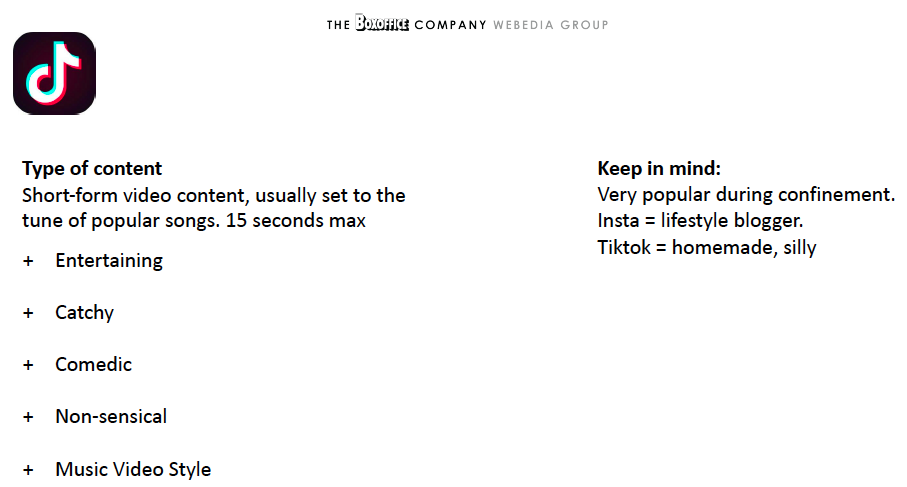
Regardless of the platform, the most important metrics to consider are the number of followers, along with the type of user interactions on your posts. The more users engage with your account, the more discoverable your account will be. Another easy way to be discoverable in social media is by using the right hashtags on posts, allowing users to find your content when it aligns with their interests.
Kaitlin Kehoe, director of content marketing at The Boxoffice Company, which provides white-label marketing services for exhibitors through its Boxoffice Studios division, cites four drivers for social media engagement: being discoverable, finding the right tone to connect with audiences, asking questions in posts, and pushing video content whenever possible. She suggests a proactive strategy for social communications, in which exhibitors can evaluate their current efforts, set realistic goals, and be present to answer questions from patrons across social channels.
Using social media will be key for exhibitors to show their social distancing efforts as they prepare to reopen. Doing so will require exhibitors to “establish the right brand voice when talking about Covid-19.” Once a tone is set, it should be consistent across all platforms. “This isn’t the time to push a sales agenda,” said Kehoe. “but it’s a great time to promote your company’s values. Trust is what will drive customers back to theaters.”
Until there are clear guidelines and a timeframe for the reopening of cinemas, communicating that trust will take a back seat to simply staying engaged with audiences. Panelist Rebecca Fons, who serves as programming director at FilmScene, an independent theater in Iowa, cites social campaigns that encourage user generated content (UGC) from patrons as an effective way to keep in touch. From a campaign inviting parents to create their own “drive-in at home” experience for children to asking customers to submit pictures recreating iconic movie scenes, the independent cinema has found innovative ways to promote the moviegoing experience without driving people to theaters.
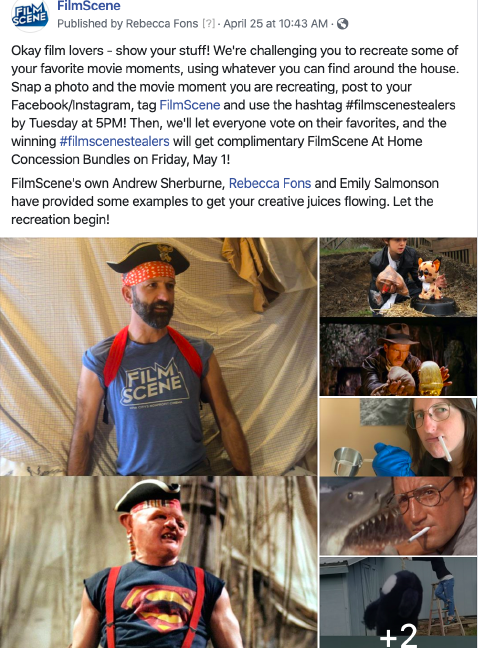
“The PR machine that drives moviegoing, with one-sheets lit up in our poster cases and captive audiences watching trailers, that’s all gone,” said Fons. “Even with those [cinemas] offering a virtual screening room, those grosses pale in comparison to physical tickets and people coming to your space. But we’ve seen that people are liking that we have something to offer even though it’s clearly not the same…there’s some comfort to that consistency. We continue to post still images, and we’re encouraging people to go check out movies in our weekly newsletters.”
Sandy Holmes, a partner in 2656 Marketing, which acts as a distributor of studio marketing assets for independent cinemas, observed the shift in studios’ marketing strategy since cinemas closed and films were pushed further down the calendar. It requires striking a balance between awareness and promotion. “[Studios] want to be able to give the best opportunities that they can to the exhibitors to keep the engagement involved with their communities through whatever resources [they] can supply without being crass about promoting anything that’s coming up, since that’s really not something they’re able to do quite yet.”
A spattering of U.S. states have allowed cinemas to open under limited capacity, but few will be able to do so with no new wide releases on the schedule until Tenet (July 17) and Mulan (July 24). While FilmScene does not have a reopening date in mind, the cinema is already tackling the logistics of how to communicate their return to business once they feel confident they can do so safely. “When we choose that date and announce it to the public, we need to provide our plan so there are no questions in people’s minds.
So much fear comes from uncertainty, and you don’t want to walk into your local movie theater and have no idea what to expect: Do you need to get your temperature taken? Do you have to be wearing a mask? Bring your own mask? Are there concessions available? How is the staff handling those concessions? These are not the questions you want your patrons to be asking, you want to have those answers ready for them. You want to be able to say, ‘We’ve thought of everything.’”
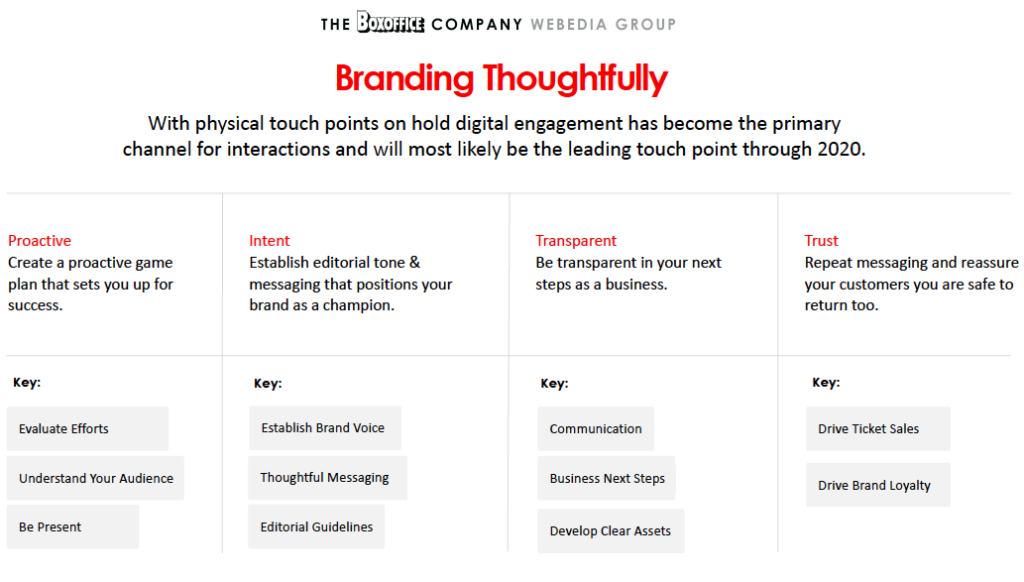
As long as cinemas take a proactive approach in communicating their post-Covid-19 safety measures, they’ll be able to communicate their confidence directly to audiences.
“We have to make sure we answer their questions so people can make an educated decision if they are ready to return to theaters or not,” said Fons. “They may not be ready, and that may change the decisions we’re making or the marketing we’re doing, but I think it needs to be clear that you’re doing the best that you can to make sure that they’re safe.”
Holmes reiterated that sentiment, emphasizing that it’s going to come down to the exhibitors to get that delicate message across. “People want to feel safe, they want to feel comfortable, they want to know they’re going to go into a safe environment,” she said. “This is going to be something from a communications standpoint that the exhibitors are going to have to tread lightly on; it’s going to be their obligation to their community.”
Ultimately, striking the right tone in social messaging will be one of the biggest challenges in communicating the additional steps cinemas are taking to ensure guests’ safety. “You don’t want to be crass and you don’t want to want to be flippant or glib about this, but you also don’t want to be doomsday or scary,” said Fons. “There’s a really delicate balance to it and I haven’t seen anybody nail it yet, but I’m very interested to see what [other exhibitors] are doing to see how we can market the films [scheduled for release] in July.”



Share this post